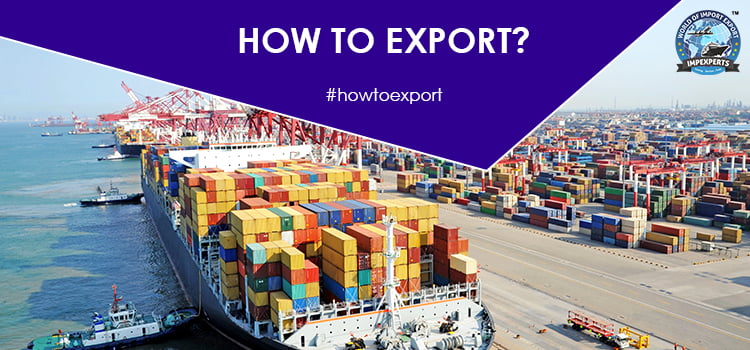We all know Indian Foreign Trade as ‘Import Export’. Since 1st April 2015, the Foreign Trade Policy 2015-20 is effective, which has certain rules and legislation for import export in India. Today, we are going to highlight the tips and suggestions for ‘How to Export’ your product or goods from India to the foreign country. So let’s begin without wasting much time.
To start with the exports of your products or services, you initially need a basic preparation of documents and actions.
- Establish your organisation legally
- Open a current account with a bank
- Getting the PAN details
- Getting the IEC (Import Export Code) or license
- Get the RCMC certificate
- Select the Product; you wish to export
- Study and analyse the Market
- Start finding genuine buyers
- Start the sampling process
- Discuss costing part
- Negotiation terms
- Involving ECGC for risk
So, How to Export?
Exporting a product includes the steps mentioned above. Exporting a wide concept, it is not a single or one-way process. It involves a lot of steps that require support and connection from the Indian government and institutions. Let us begin explaining with the above steps.
- Establish your organisation legally
When you keep your foot forth in the EXIM industry, all that matters the most is having a legal entity. Your social and legal proof of the brand plays a vital role in starting the export business. To establish the brand, you have to register your import export company under the partnership, limited company or proprietorship.
- Open a current account with a bank
Without a current account, your import export business will not be valid for any financial transactions. All the transactions are done through the bank, including the issue of a credit note, advance payment receipt, etc.
- Getting the PAN details
The PAN details are must for helping your business get authorised for trade. Also, your bank account is linked with the PAN details. Hence, getting the PAN details is a must.


Export Process Explained
The Import Export Code or License is the green ticket your EXIM business. It is issued by the government after submitting the PAN details. In some cases, your PAN detail is the IEC license number. You can view our video or read our blog on how to get the IEC registration in a few easy steps.
- Getting the RCMC Certificate
To avail benefit or concession under FTP 2015-2020, it is vital to get registered for the RCMC Certificate. It is generally granted by the Export Promotional Councils and Commodity Boards or Authorities of India.
Selecting the product is one of the major decisions because your company’s entire profit or loss is dependent on the product. You need to study the various market trends for selecting the right product for exporting. Also, you have to study the International demand of particular countries.
- Market Analysis
There should be genuine research on the market including the market size, competition, quality requirements, product demand, payment terms, insurance coverage terms, customs rules, etc. to make your import export business more sound and profitable. The role of market analysis is quite vital in helping you achieve success in the business.
- Finding Genuine Buyers
Genuine word is used for buyers because there are two types of buyers in this field, i.e., fake buyers and genuine buyers. Being an import export business owner, you must know how to export your product by scaling your buyer’s genuineness. There are many EPC in India that will help you to get the entire data of your importer. You can also find your buyer by visiting his/her website and social media platforms.
- Sampling process
Once you find the buyer or you are in touch with the buyer for exporting your product in any particular country. The next step is about sending the samples or receiving the samples. In the case of exporting the product, you have to send the samples to the buyer to help him know about the quality of your product. There are certain laws about the sampling process, which you must know before sending the sample. You can talk to our ‘Impex Mitra’ on sampling tips by calling at +91 9211066888.
- Pricing or costing terms
When you send the samples, the importer replies with an answer about the quality of the product and whether he wishes to order it or not. If he is interested in ordering the sample, he/she will discuss the payment terms, the costing terms, etc. It is always a mutual decision to agree on the costing part.
- Negotiation with the buyers
This is one of the most crucial parts of the export or import business. You never know how to export if you haven’t learnt the art of negotiating. You can consider giving a discount if you are sure about a long term relationship with the importer for your product.
- Risk coverage via ECGC
There are payment risks involved in the import export business as the business is generally carried out in the International world and mostly online. The ECGC helps the exporter to know about the genuine details of the buyer, including the last order; last payment sent, etc. The ECGC takes a minimum amount of fees for providing complete details of the buyer to the exporter.
This is the entire process answering your question on ‘How to export’ your products or goods from India to the International countries. You can also call to our Import Export experts for getting the details on ECGC, IEC and RCMC registration. We being a CHA agency, help import-export business owners will all the types of licensing and documentation. For more information on our company services and training batches, you can log on www.impexperts.com.

